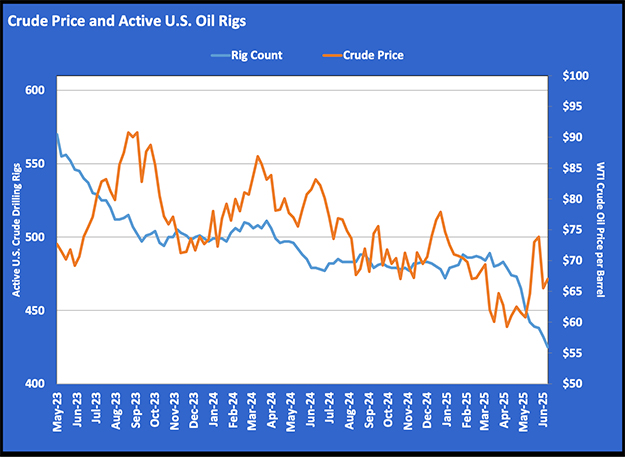What we can expect from where the price of crude is headed
Crude is becoming less mysterious. The market has determined that production controls by producers cannot, by themselves, balance supply and demand enough to bring down global crude inventory if crude prices are at $55 per barrel or higher, as it encourages too much drilling. The market also saw U.S. crude drilling plateau when prices reached $45 per barrel. That revelation essentially put a floor under crude prices.
However, the market also saw a drop in crude prices cause a fall in compliance by the Organization of the Petroleum Exporting Countries (OPEC) in meeting production quotas set under the current producers’ agreement. OPEC agreed to cut 1.2 million barrels per day (bpd) from its October production levels, and other major producing nations contributed 600,000 bpd in cuts. OPEC’s compliance with its pledged cuts fell from more than 90 percent to under 80 percent as prices fell. Obviously, that puts more unwanted supply in the crude market.
With those parameters established, traders are searching for the price point that will not be so high they can start drilling programs again, yet high enough to improve producer compliance on production-control efforts.
We review analysis where U.S. producers are targeting projects that are viable in the $40- to $50-per-barrel price range. However, most of the $40 projects are offshore with long project timelines of five years or more. Those projects are unlikely to do more than offset losses in production from older traditional fields.
We believe that the bulk of shale fields still need at least $45 per barrel to be viable. That number was reported lower for a while, but that was because drilling and completion companies had dropped rates to rock bottom when active oil drilling rigs had fallen to just 81 last August. With 765 oil rigs active in the U.S. today, drilling and completion costs are on the rise.
Since the project timeline on shale drilling is relatively short, it can respond to and impact short-term pricing. In fact, about two months after drilling in shale formations increased, production rose.
However, we must temper that a bit by acknowledging there were already a lot of drilled but uncompleted wells that shortened the timeline in which impacts on production were noticeable once prices recovered. Yet, there remains a large inventory of drilled but uncompleted wells, so we still expect a relatively rapid response to price changes.
While we have touted $50 as the logical top of the price range, given current fundamentals, we acknowledge that could be a little low. What is in question is how quickly producers will bring the capital expenditure plans they shelved over the past few weeks back into play. While projects that were just shelved may become viable at $50, producers may not reactivate those plans for weeks or months, resulting in higher prices in the short term.
This is exactly the kind of unknown crude markets are still trying to answer. We could see plenty of volatility and prices above $50 before they are answered. We still see $45 as the logical low, but we may need to expand the potential upside beyond $50 if producers drag their feet on resuming drilling activity.
The table above shows recent crude price forecasts by major analysts. The latest forecasts for 2017 crude prices seem to corroborate our outlook on prices. These analysts have dropped their price outlooks for crude quite dramatically from the beginning of the year, when there was hope that OPEC’s production-controls agreement would be enough to balance global crude supply and demand at a higher price point.
Call Cost Management Solutions today for more information about how Client Services can enhance your business at (888) 441-3338 or drop us an email at info@propanecost.com.

















